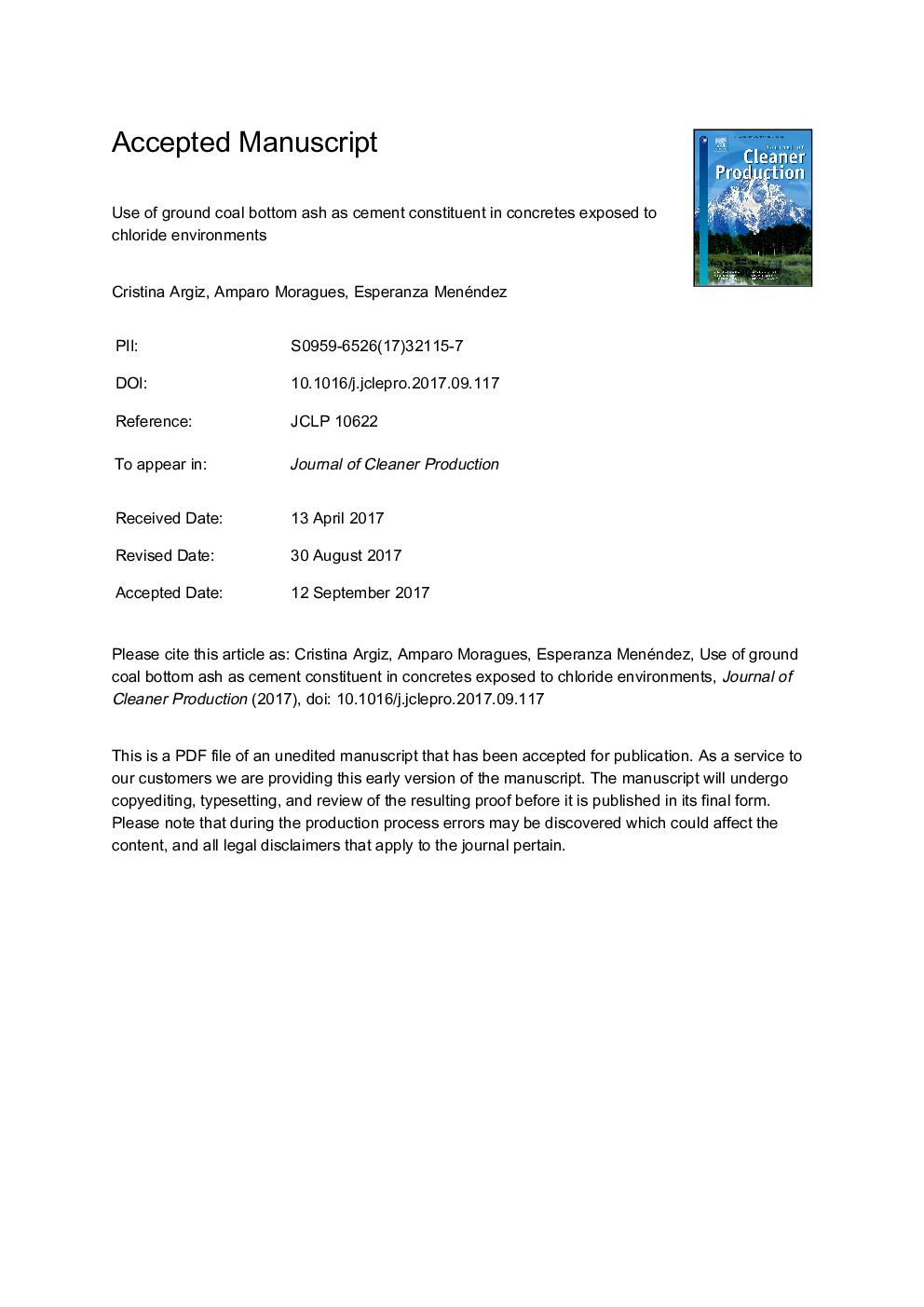| Article ID | Journal | Published Year | Pages | File Type |
|---|---|---|---|---|
| 5479192 | Journal of Cleaner Production | 2018 | 29 Pages |
Abstract
Coal bottom ash waste obtained from thermoelectric power plants could be recycled like any other new cement constituent when sufficiently ground. Such a proposal would result in a reduction of both energy consumption and CO2 emissions from cement production, while minimising the environmental impact of disposing of the coal bottom ash in landfill sites. The new cement constituent must guarantee at least the same durability than that of cements in current use. In order to assess the viability of using the coal bottom ash as the new main constituent of Portland cements, a comparative study with coal fly ash supplied by the same power plant was conducted. Coal fly as and ground coal bottom ash were used to replace 10% and 25% of the weight of the Portland cement. Natural chloride diffusion and chloride migration, as well as electrical resistivity, were determined in the concrete. Concretes made with 25% of coal bottom ash result in lower migration and diffusion coefficients (Dnssm = 0.98·10â12 and De = 0.42·10â12) than concretes with 10% (Dnssm = 4.12·10â12 and De = 1.33·10â12). These coefficients are lower than those for coal fly ash for the same ash content of 25% (Dnssm = 3.82·10â12 and De = 1.26·10â12) or 10% (Dnssm = 7.06·10â12 and De = 3.80·10â12). In addition, concretes made of cements with 25% of ground coal bottom ash showed significant higher resistivity values than coal fly ash concretes with ages over 28 days. These results can be explained by considering the higher fineness of the ground coal bottom ash.
Related Topics
Physical Sciences and Engineering
Energy
Renewable Energy, Sustainability and the Environment
Authors
Cristina Argiz, Amparo Moragues, Esperanza Menéndez,
